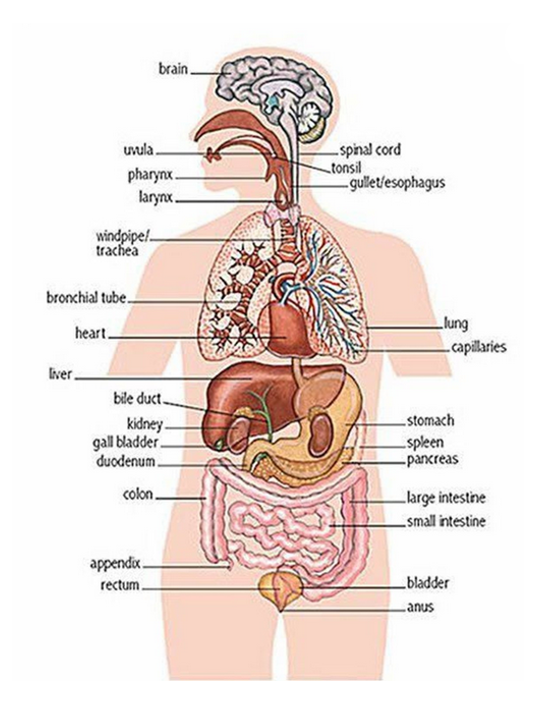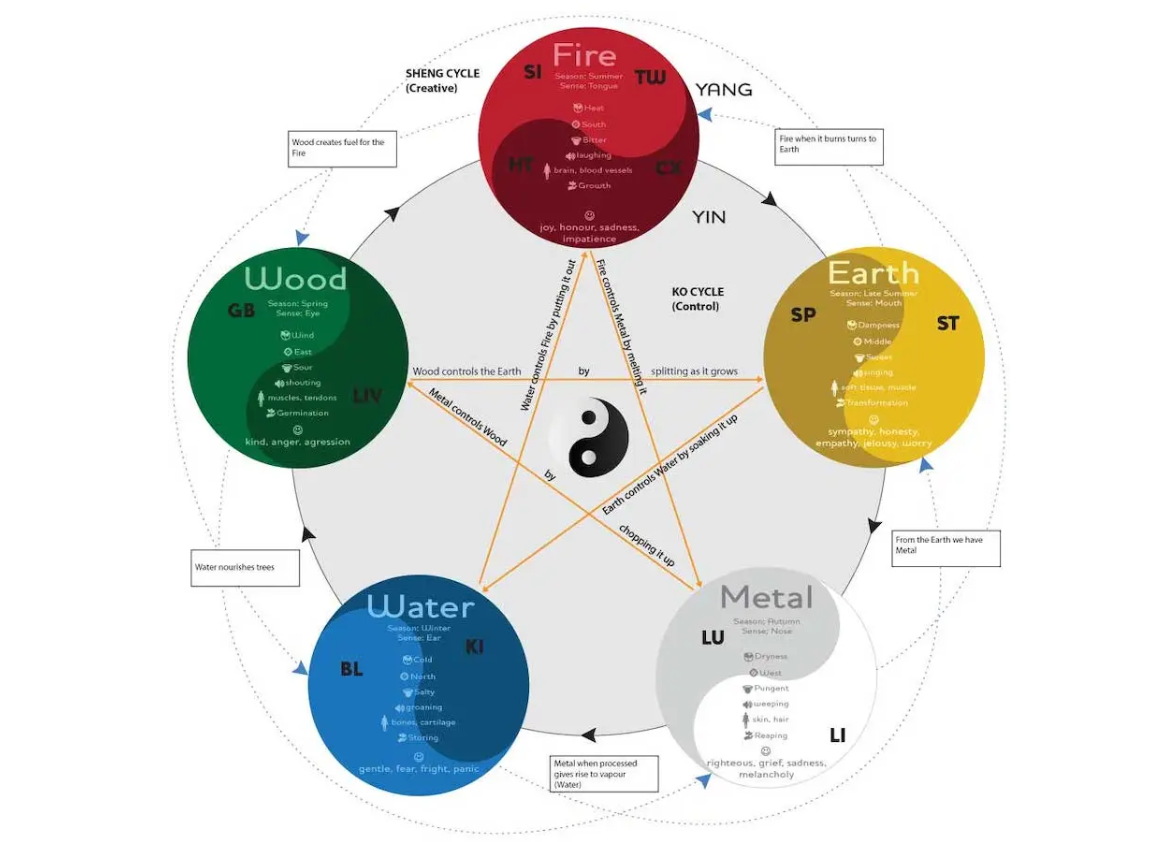Filling The Organs with Smiling Energy
This version of the Inner Smile meditation is specifically designed to nurture and energise the main organs of the body.
By directing gentle, smiling energy inward, we activate a deep healing response, enhancing the natural functioning of each organ. This practice is profoundly restorative, as the warmth of a genuine smile infuses the organs with vitality, balance, and positivity—a sensation that can be easily felt and deeply experienced.

[Image from Mantak Chia]
1. Short form
The short form of the Inner Smile practice is a streamlined version that focuses exclusively on the Yin organs. These are the:
- Heart (governs circulation and houses the spirit)
- Lungs (regulate breath, energy exchange, and emotional balance)
- Liver (stores blood, detoxifies, and governs emotions)
- Spleen/Pancreas (supports digestion, energy distribution, and immunity)
- Kidneys (store vital essence and regulate water balance)
Since these organs hold and process deep emotional energies, they can become burdened by stress, negativity, and imbalances over time. By extending the Inner Smile to these organs, we cultivate emotional harmony, vitality, and deep inner healing.
Practice Guide
Please watch the video below for this practice.
[INSERT VIDEO]
A written description of the exercise is provided at the Exercise Files tab.
After you have finished the exercise, spend a moment to reflect internally how you feel – what the benefit of the exerciser has been. Write down what your experience was in your Course Journal.
2. The Long Form
The long form of the Inner Smile practice extends beyond the Yin organs to include the Yang organs, creating a comprehensive healing meditation that balances the entire internal system.
The longer form follows the sequence carried out in the short form and then continues from where it ends, incorporating the:
- The small intestine;
- The large intestine;
- The gall bladder;
- The stomach;
- The bladder; and then to finish,
- The heart.
The image below shows you where those organs are (if you are not familiar with it already).

With each step, one follows the same idea; on the inhalation, smiling to the organ, and then on the exhalation feeling the organ smiling back, and repeating for several breaths.
Practice Guide
Please watch the video below for this practice.
[INSERT VIDEO]
A written description of the exercise is provided at the Exercise Files tab.
After completing the exercise, take a moment to attend internally, noting the effect of the practice. Write down your experience in your Course Journal.
3. Further Notes Relating to Both Short and Long Forms
(i) No negative self-self talk
When shining this inner smile on the organs, we must be careful not to engage in negative, recriminating self-talk – borne out of shame for not having looked after our bodies in the past. Realise that our bodies are always doing the very best that they can do to make us healthy and well.
Our bodies are the best examples that we have of unconditional love: no matter what we do to them, they always respond to make things better for us. Pain is the body’s way of shouting out for attention, but it is not a punishment; the body is always seeking to heal itself. When you cut yourself, for example, the body just immediately sets out to heal the wound – it doesn’t blame you for what you did to it, it just gets on with what is required.
So when meditating on the inner body, with the inner smile for example, do so with utter gratitude for everything that the body is. Cultivate feelings of gratitude and optimism in the body – this too is a self-feeding feedback loop – it is a cycle that keeps getting bigger.
(ii) The Order of the Exercise
The sequence used in both the short form (Yin organs) and long form (Yin and Yang organs) of the Inner Smile practice is not arbitrary; it follows the principles of the Organ Control Cycle in Traditional Chinese Medicine (TCM). This cycle describes the natural regulatory relationships between the organs, ensuring balance, harmony, and optimal functioning within the body’s energy system.

In TCM, the body’s internal organs are interconnected through two main cycles:
- The Generating (Sheng) Cycle – Also known as the nourishing cycle, where one organ supports and strengthens the next in a continuous flow of energy.
- The Controlling (Ko) Cycle – Also known as the regulatory cycle, where each organ plays a role in keeping another organ’s energy in check, preventing excess or deficiency.
While the Generating Cycle is about support, the Controlling Cycle is about regulation, ensuring no single organ becomes overactive or stagnant.
The Inner Smile meditation is structured according to the Controlling Cycle, aligning with the natural way that the body maintains balance. This ensures that, as we direct smiling energy to each organ in sequence, we are following the body’s innate intelligence to restore harmony and health.
By following this order, we ensure that each organ receives the proper amount of Qi to function optimally, while also preventing any excess buildup of energy that could lead to imbalance.
